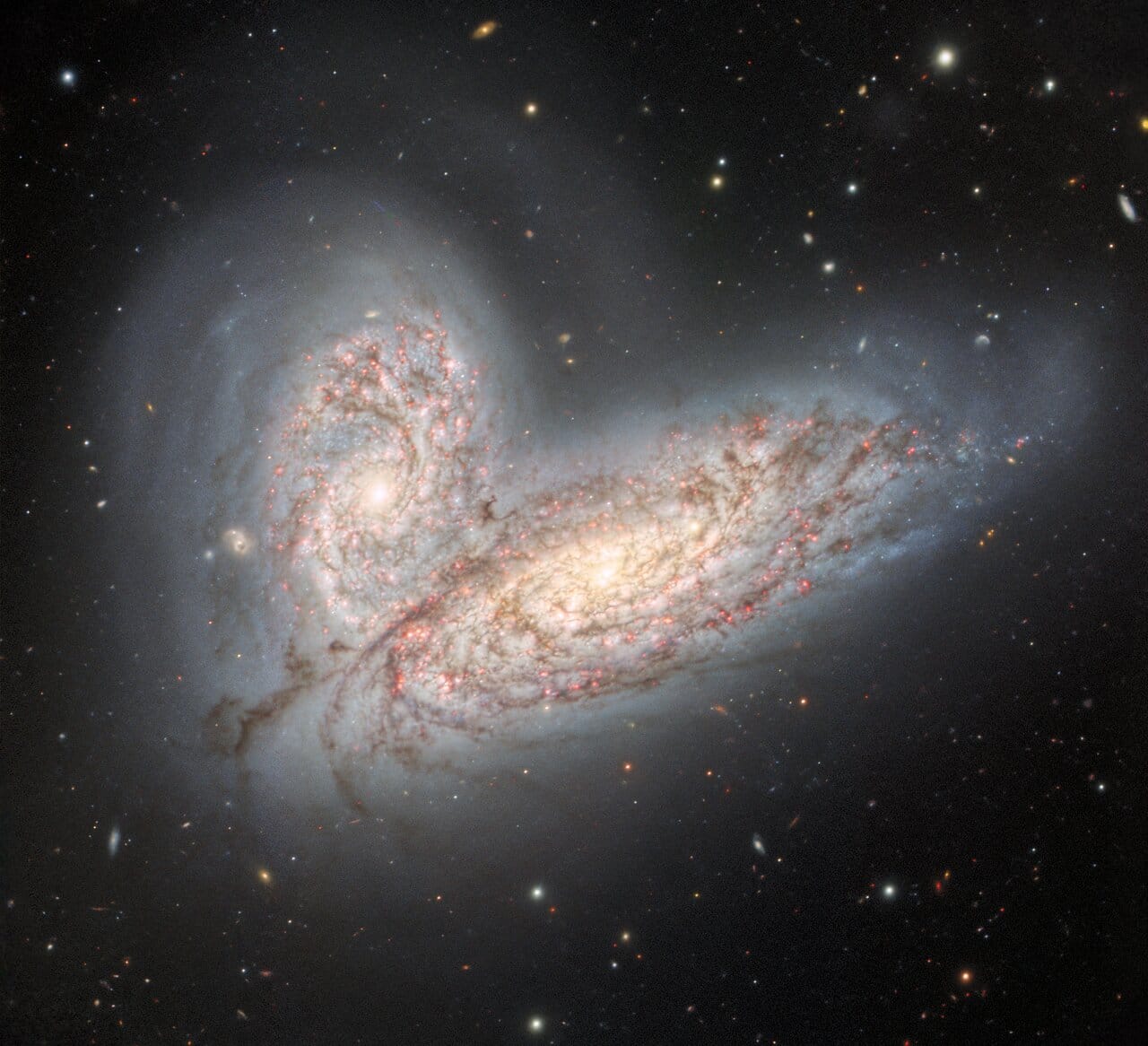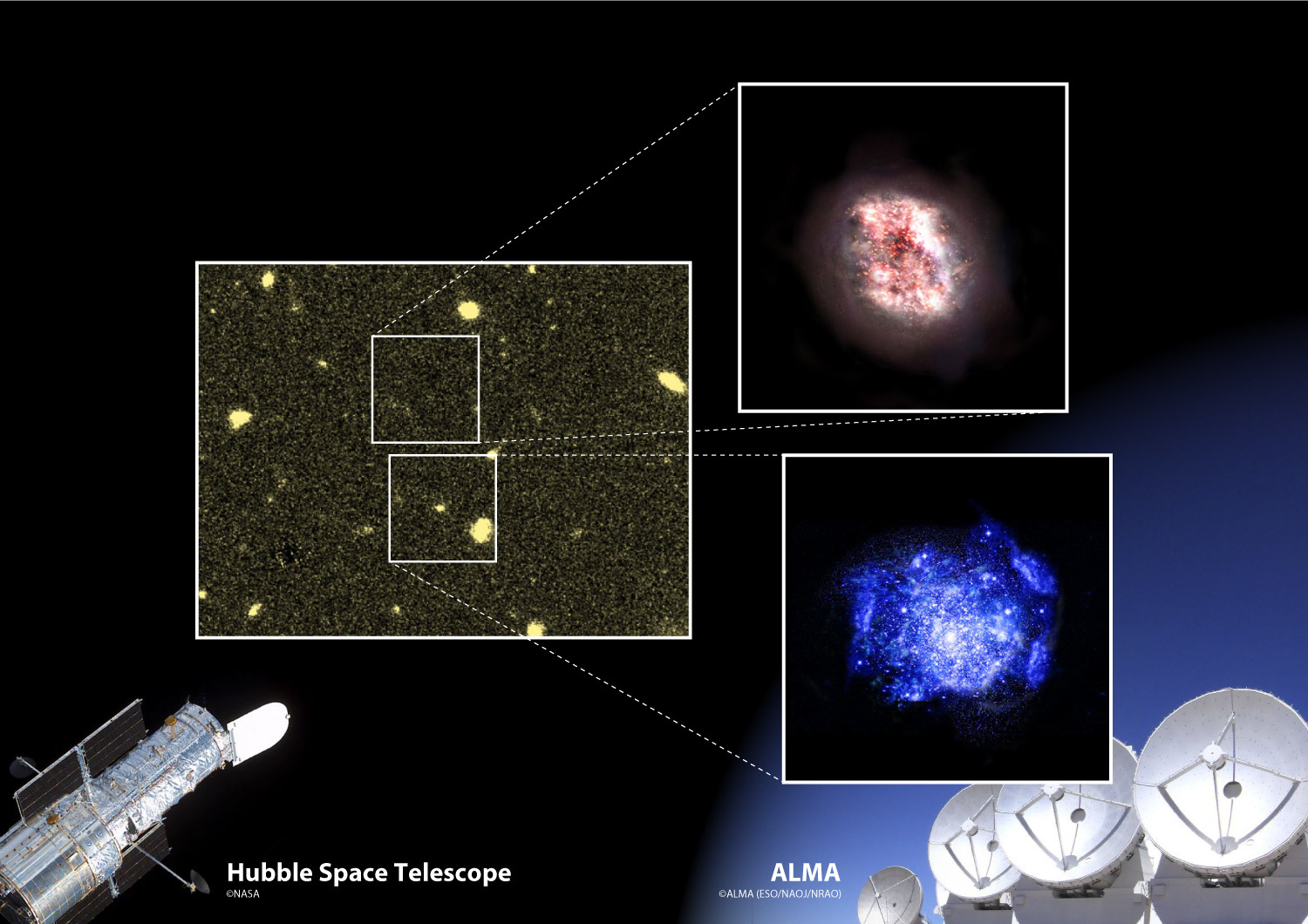Noticias y novedades sobre astronomía escritas por el periodista especializado Hernán Julio

This image from the Gemini North telescope in Hawai‘i reveals a pair of interacting spiral galaxies — NGC 4568 (bottom) and NGC 4567 (top) — as they begin to clash and merge. The galaxies will eventually form a single elliptical galaxy in around 500 million years.
Telescopio de NOIRLab instalado en Mauna Kea, Hawai‘i, revela impresionante imagen de una fusión entre dos galaxias espirales. Una nueva imagen capturada por el telescopio Gemini Norte, en Hawai‘i, registra…

This artist's impression illustrates the merger of two neutron stars, which produces the remarkably brief (1- to 2-second) yet intensely powerful event known as a short gamma-ray burst. The corresponding explosion, known as a kilonova, also forges the heaviest elements in the Universe, such as gold and platinum. Recent observations have found that some of these bursts, rather than occurring in the vastness of intergalactic space as was initially suggested, actually happen in previously undiscovered galaxies in the very distant Universe, up to 10 billion light-years away. NOIRLabs’ two Gemini telescopes were instrumental in helping make this discovery.
Ambos telescopios ayudaron a revelar que los eventos ocurrieron en galaxias del universo primitivo desconocidas hasta ahora. Una serie de misteriosos estallidos de rayos gamma se produjeron aparentemente como solitarios…

This mosaic shows the two GHOST spectra of HD 222925, a remarkably bright, chemically complex star. This star is a prime example of the type of object that GHOST will investigate. The two GHOST spectra shown here, which were produced in the same single observation, measure light from around 350 nm to around 1015 nm. Light that is ‘bluer’ than 380 nm is ultraviolet and is invisible to our eyes. Light that is ‘redder’ than around 750 nm is infrared and is also invisible to our eyes. The dark lines in the rainbow are like the fingerprints of the gasses present in the star, including hydrogen, calcium, iron and gold. See this image comparison to see the most prominent features labeled.
Un espectrógrafo de última generación inicia sus operaciones en Gemini Sur, Chile Gemini Sur, uno de los telescopios ópticos-infrarrojos más poderosos y productivos del mundo recibió una importante actualización con…

Artist’s depiction of a protoplanetary disk with young planets forming around a star. The right-side panel zooms in to show various nitrile molecules that are accreting onto a planet.
Una colaboración internacional de científicos que utilizan el Atacama Large Millimeter / submillimeter Array (ALMA) ha completado el mapeo de composición química más extenso de los discos protoplanetarios alrededor de cinco estrellas jóvenes cercanas en…
Mientras investigaba los datos de galaxias jóvenes y distantes observadas con el Atacama Large Millimeter / submillimeter Array (ALMA), Yoshinobu Fudamoto de la Universidad de Waseda y el Observatorio Astronómico…
Los caminantes lunares de Artemis que exploran el Polo Sur lunar usarán trajes espaciales revolucionarios que resisten el duro entorno de la Luna y los mantienen a salvo. La NASA está adoptando asociaciones comerciales…

Luis Chavarría, ESO Representative in Chile.
El astrónomo chileno Luis Chavarría pasó a ser el nuevo representante de ESO en Chile. Sucede a Jean-Michel Bonneau, quien se desempeñó como representante interino desde junio de 2021, tras…

The galaxy Centaurus A, which lies over 12 million light-years away in the direction of the southern-hemisphere constellation Centaurus (The Centaur), is the leading light of this striking image. This image provides a spectacular view of the luminous glow of stars and dark tendrils of dust that hide the bright center of the galaxy. This dust is the result of a past galactic collision, in which a giant elliptical galaxy merged with a smaller spiral galaxy. As well as large amounts of gas and dust, Centaurus A’s dust lane contains widespread star formation, as indicated by the red clouds of hydrogen and by the large numbers of faint blue stars visible at each end of the dust lane. Zoom into the image to see more.
La galaxia Centaurus A, que se encuentra a más de 12 millones de años luz en la Constelación de Centaurus (El Centauro) protagoniza esta espectacular imagen que destaca el…
El rover Perseverance Mars de la NASA recogió con éxito su primer par de muestras de rocas, y los científicos ya están obteniendo nuevos conocimientos sobre la región. Después de recolectar…
LA PRIMAVERA DE VERDAD El miércoles 22 de septiembre, cuando sean las 16:21 hrs., es decir a media tarde, se producirá el fenómeno astronómico llamado equinoccio, y es el momento…










